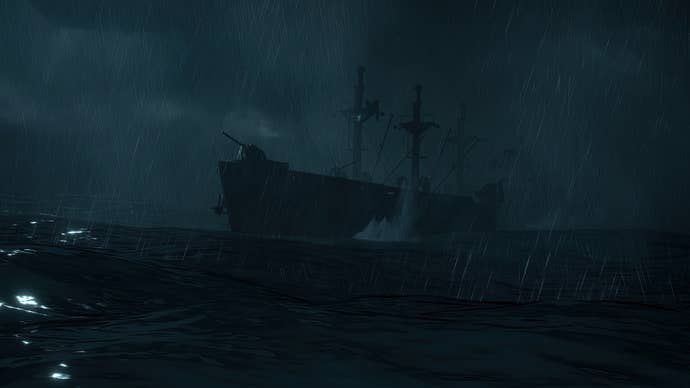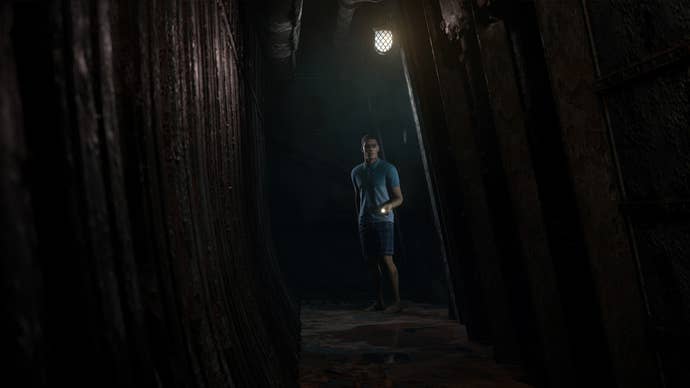As The Dark Pictures Anthology celebrates its fifth anniversary, here's why its first entry remains its best
Though its story was divisive, Man of Medan set the gold standard for branching in narrative horror games.
I'm not sure if it's my advancing age or the literal pandemic that arrived hot on the heels of this game's release, shattering (perhaps permanently) our collective ability to accurately perceive the passage of time, but I really can't believe that The Dark Pictures Anthology has been around for half a decade already. Man of Medan still feels like a new-ish game to me, so the realisation that today marks the fifth anniversary of its release is a sobering one.
Of course, there are now four Dark Pictures games out there that you can play right now — five, in fact, if you own a VR headset — and we recently caught a long-awaited glimpse of the series' next core entry at Gamescom ONL. It'd be pretty unreasonable to expect Man of Medan, as the franchise's debut, to be anywhere less than about five years old at least, under those circumstances.
The Dark Pictures Anthology is a choose-your-own-grisly-death horror series from Supermassive Games. It's a clear spiritual successor to their breakout hit Until Dawn, and every main game so far has taken a subtly different approach to the repeated base concept of "five people get trapped in a horror trope and have to fight to survive". So far we've seen wealthy vacationers held hostage on a ghost ship in Man of Medan; a college field trip stranded in a ghost town in Little Hope; an army unit stumble upon a long-buried ancient temple in House of Ashes; and a documentary film crew menaced on the private island of a serial killer in The Devil in Me.
Opinion on which games worked and which didn't is divided, which is perhaps to be expected given that a different group of horror fans gets their turn at seeing their favourite sub-genre represented every time. But each subsequent entry builds to a greater or lesser degree on the feedback from prior games, so unsurprisingly the newer entries tend to be slightly better-received on average. But since it's Man of Medan's birthday, please let it have its flowers as I make my case for why it's still the best game in The Dark Pictures Anthology — and in fact, might be Supermassive's best horror game to date.

Let's get the obvious criticism out of the way: yes, Man of Medan's surprise story twist was very divisive when the game first came out, and not without reason. I won't spoil it here just in case the reader hasn't played it, but I'll admit even I was a bit let down, though not enough to make me enjoy the rest of the game any less. Indeed, forgiveness is in the stats, and I've since finished MoM six or seven more times even knowing where it's headed.
Man of Medan does indeed contain a few narrative wobbles, and the same criticisms that apply to the rest of the series — the protagonists' fully mocapped facial animations sometimes becoming scary in the wrong way is a big one — can equally apply to MoM. But there is one thing that Man of Medan does so well that I'd argue, in this sense at least, that it's even better than Until Dawn.
The whole point of Supermassive's horror output is that any character can die, anyone can be the sole survivor, and any victim/survivor combo with the main cast is possible. Thanks to this, every one of these games technically has dozens — or even hundreds — of potential endings, which you can't really argue with when it comes to replayability.

But most of the time, after a few playthroughs you'll have seen through the matrix a bit, and realised that at least a couple of characters have plot armour that ensures they're actually safe right up until near the end of the game. One of the worst offenders for this is actually the most-lauded Dark Pictures game to date, House of Ashes, which makes for the most satisfying first playthrough from a story standpoint for the exact reason that repeated replays get old fast: over half the main cast is in fact completely unkillable until the final two chapters.
It makes a degree of narrative sense to ensure that your core theme is properly underscored before the main players bite the dust, of course, but this is where Man of Medan comes into its own. Of the 60-odd potential character deaths proudly boasted in MoM's marketing, there's a degree of flexibility unseen elsewhere in Supermassive's output. While it's not quite true that anyone can die at any time, enough situations can go a variety of different ways that it's entirely possible to reach the finale with any combination of characters, who've gone down some very different paths to get there depending on who they were with and when and whether everyone survived. And the story won't suffer for it, because the web of relationships that the game builds up between the five protagonists is such that any duo (or trio, or quartet, if indeed the whole group hasn't made it this far) can carry the final confrontation in a way that works.
Given that branching narratives are the underpinning of Supermassive's by-now-established legacy in the field of horror games, I am adamant that Man of Medan should be recognised as the entry that still best demonstrates the original point of The Dark Pictures Anthology. It may be the simplest in terms of gameplay, and your mileage may vary as to whether the characters are annoying (I actually think they're the best DPA cast yet, but that's another debate for another day); and of course there's That Ending to contend with. But if you actually want a horror adventure game that you can play again and again and see totally different scenes and scenarios play out based on your divergent choices? Five years later, Man of Medan still reigns supreme.

